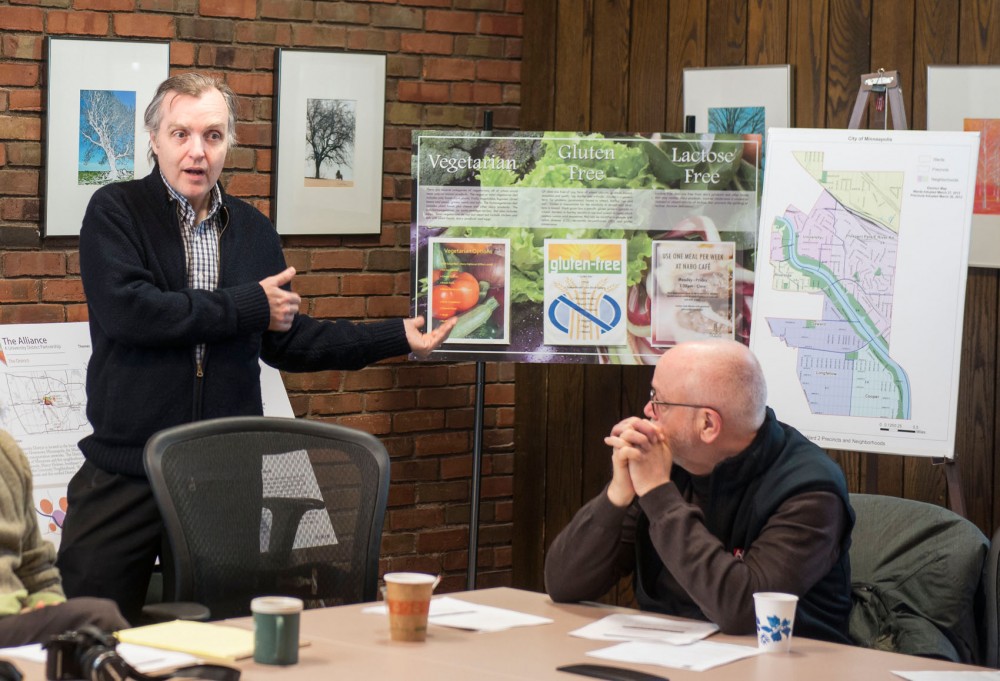After months of campaign rhetoric, Minneapolis City Council members are beginning to act on their promises.
City leaders recently updated goals and values for Minneapolis, proposing a greater focus on achieving equity and managed growth. While residents and council members generally agree on the plan, some say they’ll stay skeptical until they see results.
Every four years, the City Council creates a plan that acts as a “compass” for its policymaking, said Ward 2 City Councilman Cam Gordon, who represents neighborhoods around the University of Minnesota.
Gordon held an open meeting Saturday for residents to discuss the new goals. The public can comment on the draft of the plan until March 14, and the plan will get final approval March 26. The city’s Committee of the Whole approved the draft last week.
Gordon said the four-year vision is similar to that of the past years, with a few notable exceptions.
“This time, we’ve raised the value of equity,” Gordon said at Saturday’s meeting, adding that racial equity in Minneapolis is a prominent concern for many council members.
In 2010, when the last four-year vision took effect, the City Council approved public safety goals, calling specifically for the elimination of gangs and graffiti. Another goal, “Many People, One Minneapolis,” envisioned closing racial and socioeconomic gaps in employment and housing.
While the 2010 vision included transparency and accountability as values, Gordon said he thinks the current City Council has a greater interest in improving transparency in city government.
The committee amended the plan last week, although some changes were small. For example, Gordon said the committee discussed the meaning of a “vibrant city” before changing the language to “vitality.”
“Believe it or not, that’s what we spent some time on,” Gordon said.
The city’s 2014 draft includes city growth as a stand-alone item, something Gordon said is new.
“While preserving the city’s character, more people and businesses lead to a growing and thriving economy,” the preliminary plan said.
Paul Zerby, a former Ward 2 Councilman who is currently active in the Prospect Park neighborhood, said he likes the vision, but the values are very general.
“Equity, to me, is extremely important,” he said, “probably the most important goal, in my opinion.”
He said he’s looking forward to more specific proposals in the future that will address these issues.
Visions and values are only worth so much, said Brian Miller, who attended Saturday’s meeting and is the executive director of the nonprofit organization Seward Redesign.
The larger issue, he said, is how the visions are carried out.
“To me, it’s more about outcomes than it is about values,” Miller said.
The City Council shouldn’t focus solely on achieving racial equity, he said. Instead, it should look at the larger picture and address economic disparities.
Miller, who is a local developer, said he supports the directed growth aspect of the plan, which calls for increased development while maintaining areas’ uniqueness.
“It’s not about doing projects,” he said. “It’s about creating great neighborhoods.”
Zerby agreed, saying he’s not a fan of unorganized growth. Development needs to be guided, he said.
“I do think we have to be careful about how we do it,” he said.








